pytorch——房价预测
1、首先对数据进行读取和预处理
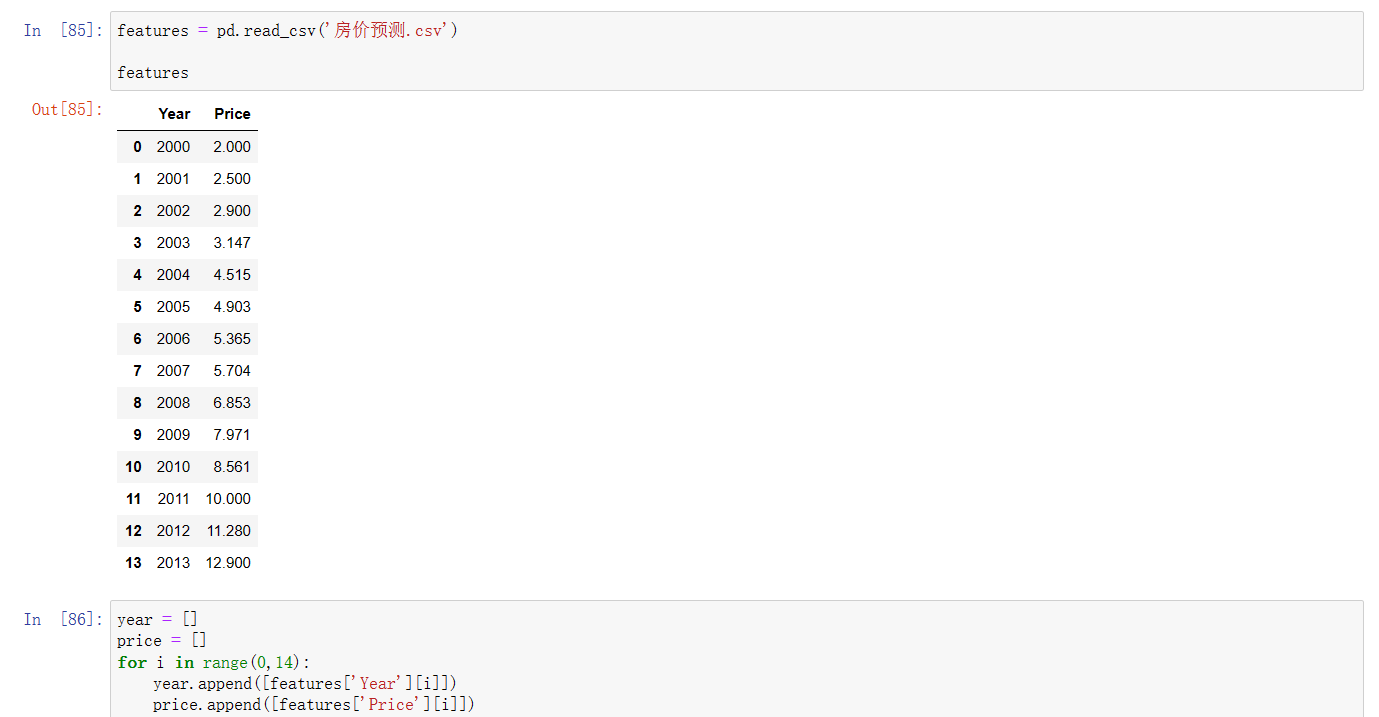
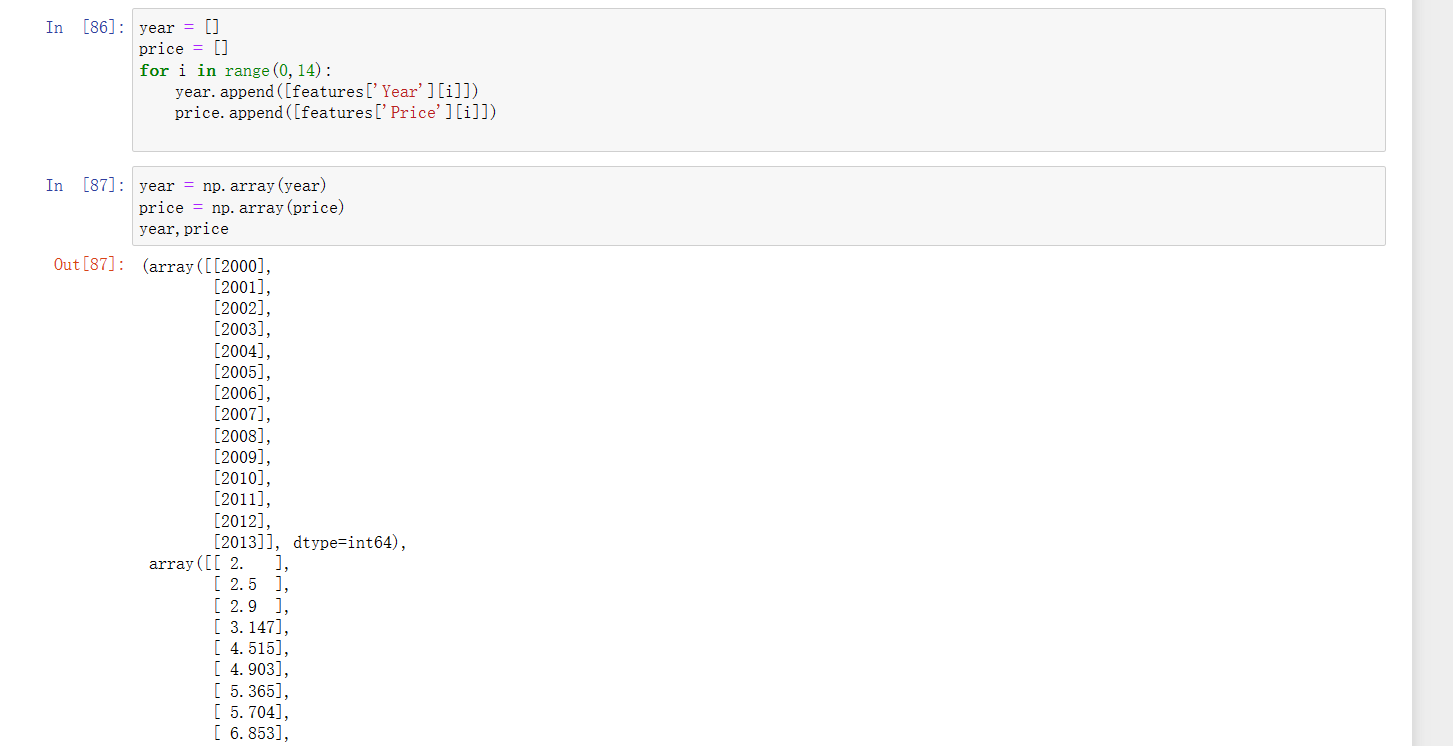
2、读取数据后,对x数据进行标准化处理,以便于后续训练的稳定性,并转换为tensor格式
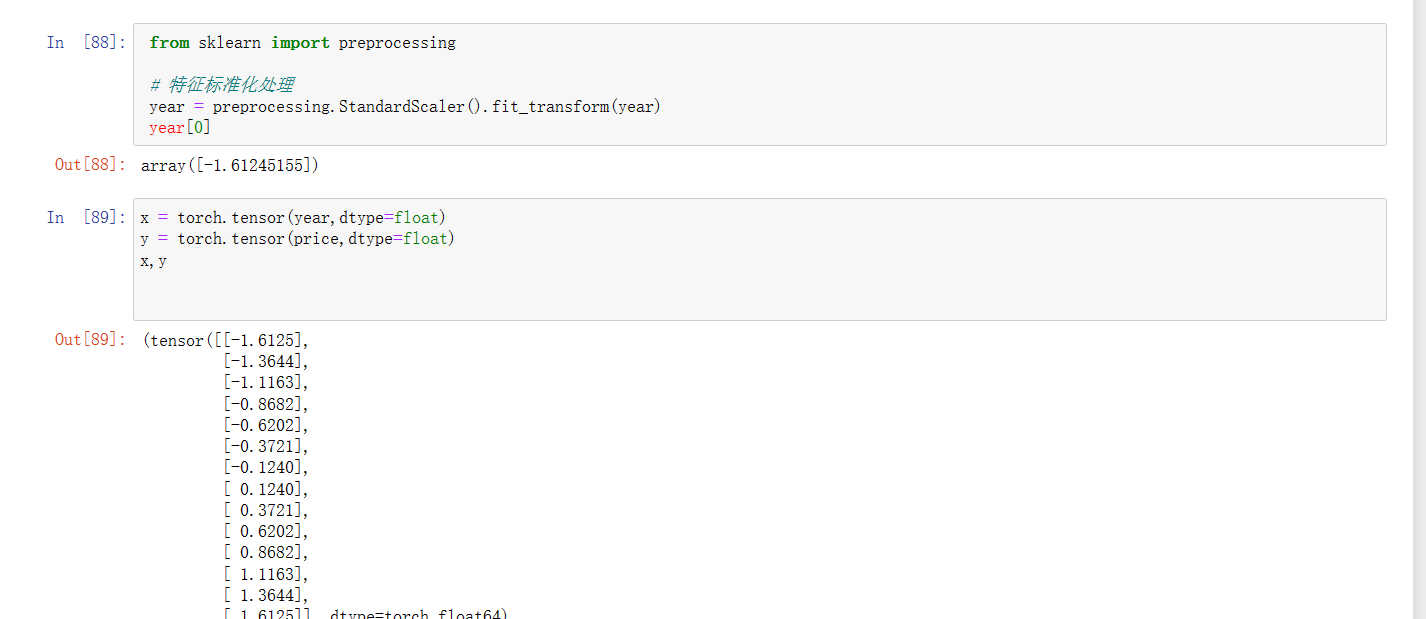
3、接下来设置训练参数和模型
这里采用回归模型,既y=x*weight1+bias1,设置的学习率为0.0006,损失函数采用了MSE(均方误差)
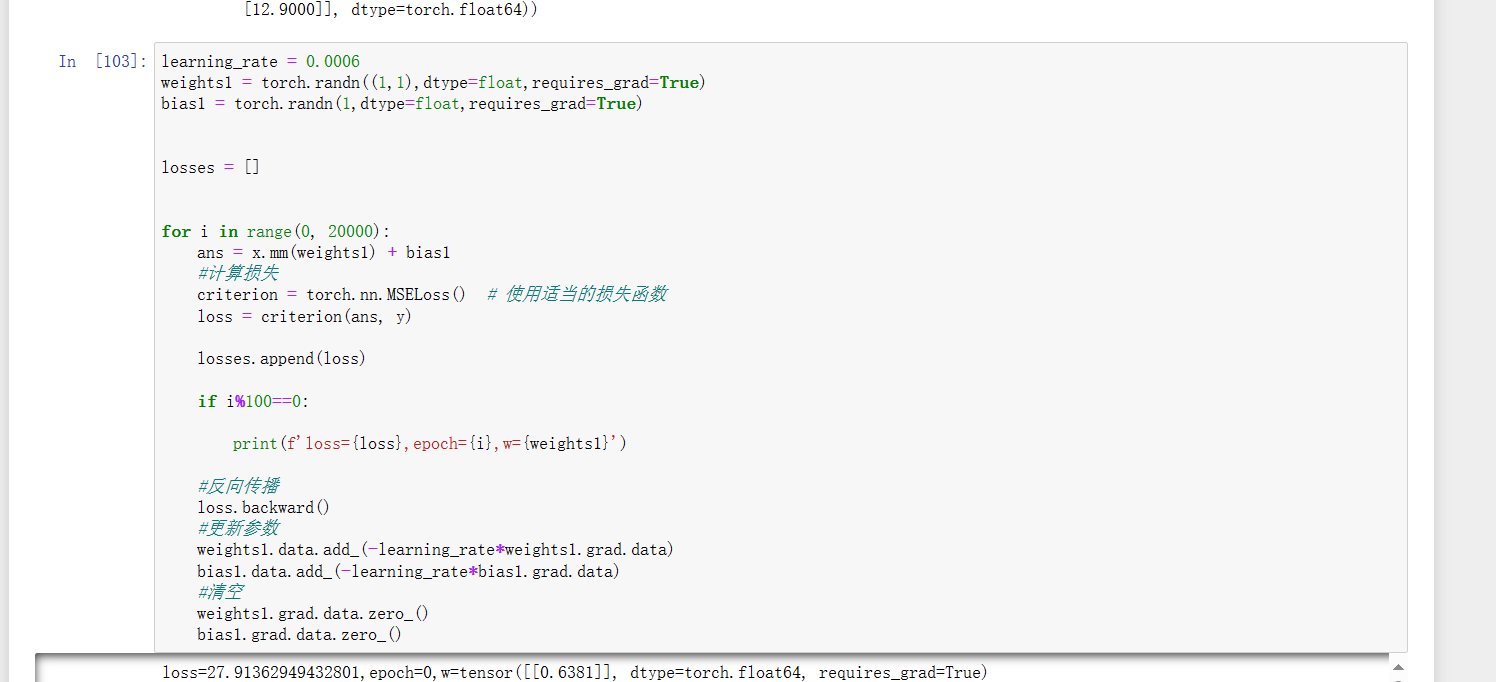
4、绘制图像
由于数据量较少,所以将整个训练集作为测试集,观察生成的图像
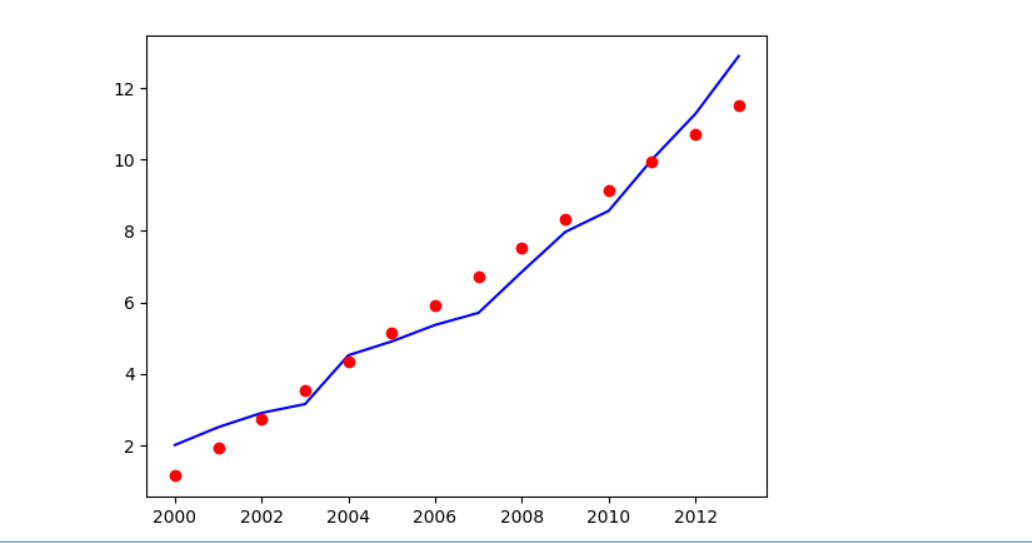
完整代码
import torch import numpy as np import pandas as pd import matplotlib.pyplot as plt import torch.optim as optim import warnings warnings.filterwarnings("ignore") # In[4]: features = pd.read_csv('房价预测.csv') features # In[26]: year = [] price = [] for i in range(0,12): year.append([features['Year'][i]]) price.append([features['Price'][i]]) # In[27]: year = np.array(year) price = np.array(price) year,price # In[53]: from sklearn import preprocessing # 特征标准化处理 year = preprocessing.StandardScaler().fit_transform(year) year[0] # In[54]: x = torch.tensor(year,dtype=float) y = torch.tensor(price,dtype=float) x,y # In[62]: learning_rate = 0.0001 weights1 = torch.randn((1,1),dtype=float,requires_grad=True) bias1 = torch.randn(1,dtype=float,requires_grad=True) losses = [] for i in range(0, 5000): ans = x.mm(weights1) + bias1 #计算损失 criterion = torch.nn.MSELoss() # 使用适当的损失函数 loss = criterion(ans, y) losses.append(loss) if i%100==0: print(f'loss={loss},epoch={i},w={weights1}') #反向传播 loss.backward() #更新参数 weights1.data.add_(-learning_rate*weights1.grad.data) bias1.data.add_(-learning_rate*bias1.grad.data) #清空 weights1.grad.data.zero_() bias1.grad.data.zero_() # 使用 features['Year'] 和 features['Price'] 创建日期和价格的列表 year = features['Year'] price = features['Price'] # 将 ans 转换为 Python 列表 ans_list = ans.tolist() # 提取列表中的每个元素(确保是单个的标量值) predictions = [item[0] for item in ans_list] # 创建一个表格来存日期和其对应的标签数值 true_data = pd.DataFrame(data={'date': year, 'actual': price}) predictions_data = pd.DataFrame(data={'date': year, 'prediction': predictions}) # 真实值 plt.plot(true_data['date'], true_data['actual'], 'b-', label='actual') # 预测值 plt.plot(predictions_data['date'], predictions_data['prediction'], 'ro', label='prediction') plt.xticks(rotation='60') plt.legend() # 图名 plt.xlabel('Date') plt.ylabel('Price') # 注意修改为你的标签 plt.title('Actual and Predicted Values') plt.show()
本文由博客一文多发平台 OpenWrite 发布!





【推荐】国内首个AI IDE,深度理解中文开发场景,立即下载体验Trae
【推荐】编程新体验,更懂你的AI,立即体验豆包MarsCode编程助手
【推荐】抖音旗下AI助手豆包,你的智能百科全书,全免费不限次数
【推荐】轻量又高性能的 SSH 工具 IShell:AI 加持,快人一步
· winform 绘制太阳,地球,月球 运作规律
· AI与.NET技术实操系列(五):向量存储与相似性搜索在 .NET 中的实现
· 超详细:普通电脑也行Windows部署deepseek R1训练数据并当服务器共享给他人
· 【硬核科普】Trae如何「偷看」你的代码?零基础破解AI编程运行原理
· 上周热点回顾(3.3-3.9)